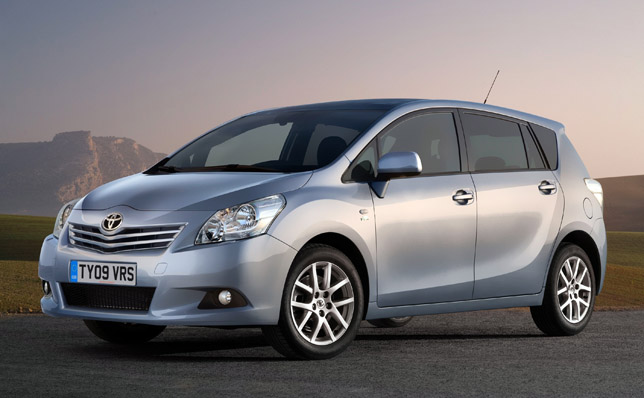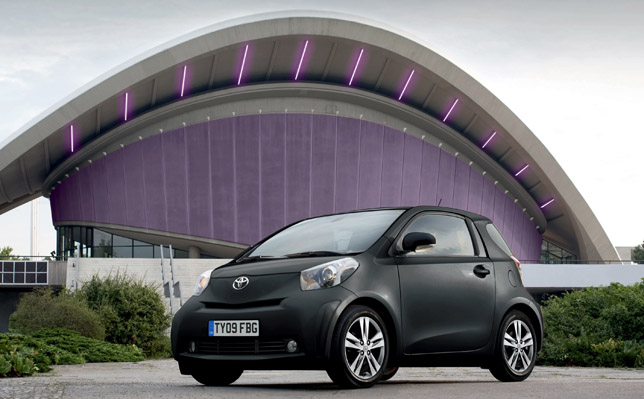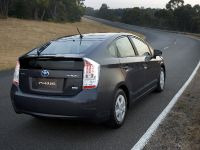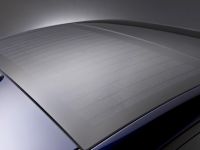Toyota At The 2009 Geneva Motor Show
World premiere of new Toyota Verso Toyota will unveil its all-new Verso at the Geneva motor show, a no-compromise MPV that offers more space, comfort and practicality, and benefits from the latest occupant and pedestrian safety features. Ride quality, acoustic comfort and dynamic abilities match those of conventional passenger cars.
The interior features an improved Toyota Easy Flat-7 system for quick and convenient folding of the five individual rear seats. Special attention has been paid to increasing comfort for rear passengers with improved second and third row accommodation.
Introducing Toyota Optimal Drive throughout the Verso range has returned increases in engine power of up to 20 per cent, while fuel economy and CO2 emissions show improvements of up to 12 per cent, compared to the current model.
In the UK Verso will be launched in the spring with new 1.6 and 1.8 Valvematic petrol engines which will have a class-leading combination of power and CO2 emissions. These will be offered with a new six-speed manual transmission as standard, with the option of Toyota's new Multidrive S continuously variable transmission on the 1.8 unit. A revised version of the 2.0-litre D-4D diesel will also be available, with a 2.2 D-CAT 150 engine with new six-speed automatic transmission due to join the line-up later in the year.
New Verso has a class-leading drag coefficient of Cd 0.295, a longer wheelbase, wider front and rear tracks and extensively revised suspension geometry, all of which combines in better driving dynamics, handling, body control, stability and ride comfort.

Active, passive and pedestrian impact safety features are all upgraded and the new highly rigid body shell incorporates a larger percentage of high tensile steel. The standard equipment list will include curtain shield airbags that extend protection to the third row passengers, and intelligent steering assist Vehicle Stability Control (VSC+).
New Verso is designed to follow the example set by new Avensis and iQ in achieving a maximum five-star rating in the more stringent Euro NCAP crash test programme.
European Premiere of New Toyota Prius The world's most advanced mainstream passenger car, Prius stands as a motor industry milestone in vehicle powertrain development. Successive generations of the model have showcased Toyota's commitment to environmentally conscientious forward-thinking and have led the company's advance towards the creation of the ultimate eco-car.
The new, third-generation Prius remains the undisputed reference point for mass-mobility hybrid technology, setting new standards in innovation, design and driving enjoyment. Ninety per cent of the components in the award-winning Hybrid Synergy Drive system have been redesigned, making it lighter and more compact, increasing power and reducing real-world fuel consumption. Operation in cold weather has also been improved.
Overall system power has been increased by 22 per cent, while fuel economy improved by 14 per cent and CO2 emissions reduced to just 89g/km.
Prius's striking new design is inspired by Toyota's ECO-ICON concept with an aerodynamically efficient exterior that has an exceptionally low drag coefficient, Cd 0.25. The interior has an innovative dual-dashboard design, housing a series of driver assistance features that are unique in Prius's class. These include a head-up display, a steering-wheel mounted Touch Tracer control to monitor and operate a range of equipment functions, a solar-powered ventilation system to keep the car cool when parked, and a new version of Toyota's Intelligent Parking System.
New Prius will go on sale in the UK in July 2009.
New iQ 1.33 Toyota's revolutionary iQ, the world's smallest four-seat passenger car, will adopt Toyota's 99bhp (100 DIN hp) 1.33-litre Dual VVT-i engine from July.Benefiting from Toyota Optimal Drive technology and equipped with the economy-boosting Stop & Start system, the new engine will give iQ combined cycle fuel consumption of 58.9mpg and CO2 emissions of 113g/km, using the standard six-speed manual transmission. Toyota's seamless Multidrive transmission will also be available, giving 55.4mpg and 120g/km (mpg and CO2 figures provisional, subject to final homologation).
In spite of its compact dimensions, iQ has been designed to offer the highest levels of occupant protection and is fitted as standard with a comprehensive range of active and passive safety equipment and pedestrian impact protection. The performance of these and the effectiveness of the iQ's multi-load path body structure have been proven in independent Euro NCAP crash testing, earning the car a top five-star safety rating.

Toyota Environmental Leadership Toyota is taking an environmental lead through its simultaneous development of new technologies: Toyota Optimal Drive and Hybrid Synergy Drive.
Toyota Optimal Drive combines wide-ranging, advanced technologies that focus on reducing engine weight, reducing unnecessary mechanical losses, and maximising combustion efficiency. Together these technologies deliver the best possible balance of performance and driving pleasure with fuel economy and low emissions.
Hybrid Synergy Drive is a core technology that is due to become more widely available in the Toyota product range. It provides full series/parallel hybrid drive capability, with its ability to operate in both petrol and electric modes alone, as well as in a combination of both. It gives the energy-saving, zero emissions, ultra-quiet electric motor-only benefits of a series hybrid, combined with the enhanced performance benefits of a parallel hybrid.
The next-generation Prius features a revised Hybrid Synergy Drive powertrain, which gives lower fuel consumption and CO2 emissions with increased power.
Future Developments The Hybrid Synergy Drive platform has proved itself adaptable for the development of both a Plug-in Hybrid Vehicle (PHV) and a Hydrogen Fuel Cell Hybrid Vehicle (FCHV). Toyota's PHV functions as an electric vehicle on short trips and as a conventional hybrid over longer distances. Increased battery capacity allows for a greater electric-only cruising range, while the battery can be recharged from a domestic electric supply in less than two hours.
The Toyota FCHV was the world's first production fuel cell vehicle, introduced in 2002, fitted with a fuel stack in place of the petrol engine in the hybrid drive system. Toyota's next-generation fuel cell hybrid, FCHV-adv, achieves a 25 per cent improvement in fuel efficiency. Furthermore, equipping the vehicle with Toyota-developed high-pressure hydrogen tanks makes it possible to travel approximately 515 miles on a single fuelling – performance that more than doubles that of its predecessor.











